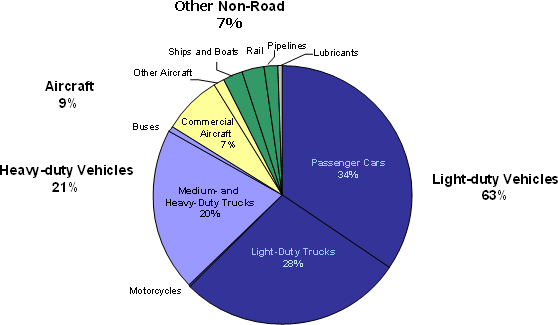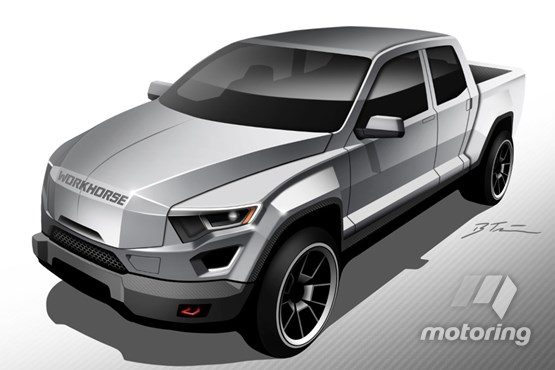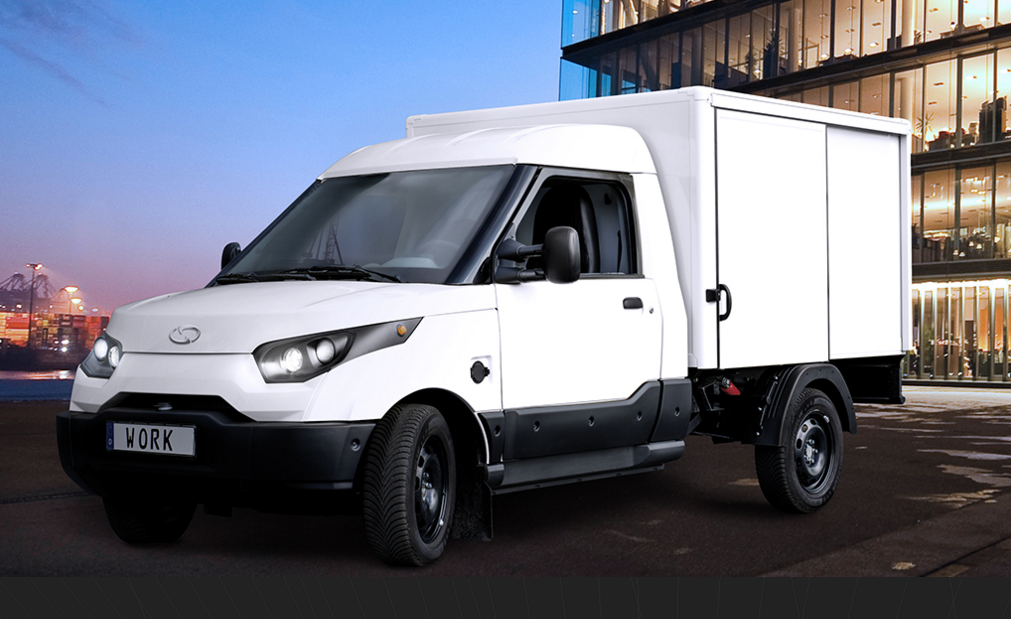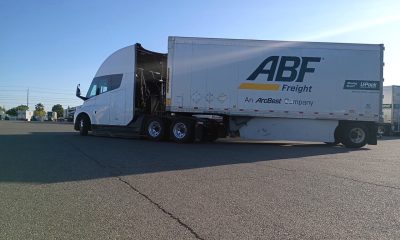News
Electric trucks from large to small vital to Tesla’s Master Plan
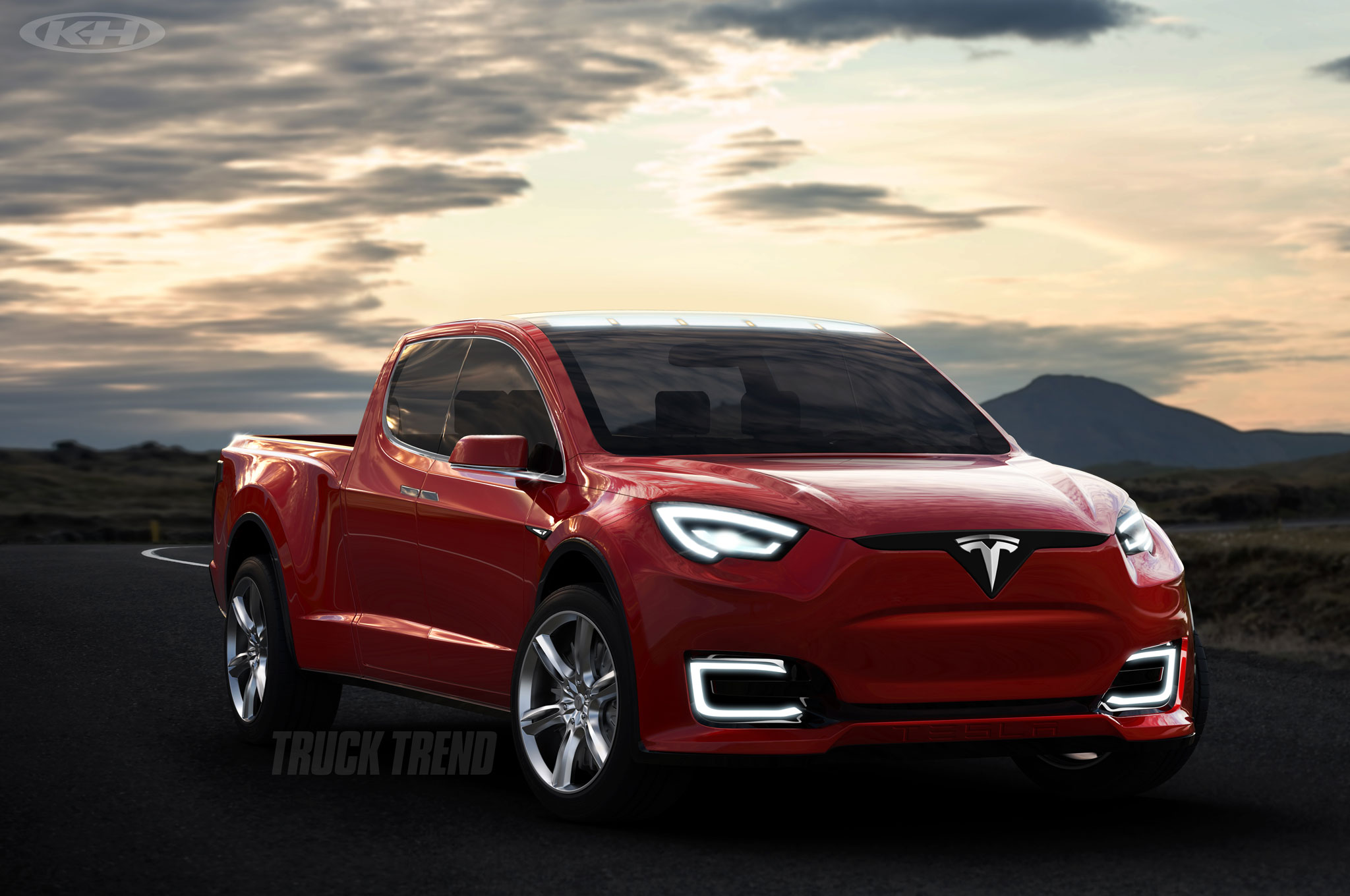
It all goes back to Elon Musk’s original secret Master Plan from 2006, when the billionaire entrepreneur issued his famous vision of the future: “[T]he overarching purpose of Tesla Motors (and the reason I am funding the company) is to help expedite the move from a mine-and-burn hydrocarbon economy towards a solar electric economy, which I believe to be the primary, but not exclusive, sustainable solution.”
Musk made an executive decision right from the beginning to target customers whose opinions influence others by building premium electric cars that would make people sit up and take notice. Until Tesla came along, electric cars were little more than glorified golf carts. But if Tesla is going to make significant progress toward its ultimate goal, it is going to have to make electric trucks as well as passenger cars. Trucks are responsible for about 50% of all emissions created by the transportation sector according to the EPA. It’s no wonder Musk’s follow up plan calls for a zero emissions Tesla targeted at the mid to heavy duty truck segment.
The Tesla Plan
“In addition to consumer vehicles, there are two other types of electric vehicle needed: heavy-duty trucks and high passenger-density urban transport. Both are in the early stages of development at Tesla and should be ready for unveiling next year,” outlines Musk in his Master Plan Part Deux.
Aaron Turpen previously gave us an excellent analysis of what characteristics a Tesla pickup would need to have in order to be successful. He set out in detail what Tesla would need to do to build such a truck.
- V8-like performance including roughly 400 hp and 380 lb-ft
- Extended and four-door cab offerings
- Cargo bed size of 5.5 feet with option for 7 feet
- Towing capacity of about 10,000 pounds
- Payload capacity of 1/2 ton to 3,000 pounds
- 4×4 capability
- Driving range, under load, of at least 150 miles
- Conventional styling and appeal
How is Tesla going to make batteries with the energy and power needed to move such heavy vehicles? The Powerwall may offer clues. Just one year after it was introduced, Tesla brought its second generation version to market with roughly double the capacity of the original. Tesla doesn’t reveal very much about its ongoing battery research programs, other than to say that improvements of between 5 and 7 percent a year are anticipated as it ramps up production at the Gigafactory.
One assumption is that batteries for trucks will be significantly different from those used on its passenger cars, with more focus on energy and less focus on power. While a Tesla pickup that breaks the 3 second 0-60 barrier would be very cool, that sort of acceleration would have little relevance to how a truck gets used in daily driving.
When it comes to trucks that haul freight, it’s possible that the company has some sort of battery swapping plan in mind at truck stops along major transportation routes. Another approach would be to simply swap tractors at designated service areas much the way Formula E drivers swap cars during a race. Tesla could own the trucks and lease them to freight companies. The idea is as old as the Pony Express.
What About The Competition?
While Tesla is busy planning its truck strategy, other companies are chasing the same low emissions dream. Most of them rely on some form of range extender engine to build a truck that has low emissions but is cost competitive. The most promising of those ventures may be from Workhorse, which claims it will have a full size plug-in hybrid pickup truck with dual motors on the market by 2018. It uses the two cylinder range extender engine from the BMW i3 REx to provide electricity to the battery when needed. A rendering of the truck by Australia’s Motoring shows a truck that is purposeful rather than svelte in its design.
Delivery and cargo vans are another target market. Four large cities — Mexico City, Paris, Madrid, and Athens — announced their intention to ban all diesel powered vehicles from their streets by 2025. Many of the medium duty trucks used to deliver food and consumer goods to city dwellers are powered by diesel engines, especially in Europe.
Deutsche Post, known globally as DHL, is one of the largest parcel delivery companies in the world. It is working hard to reduce its carbon footprint but could not find an all electric van suitable for its needs. So it built its own. “We designed it as a tool. So the fit and finish does not need to be as good as in a passenger car,” Win Neidlinger, director of business development at Deutsche Post tells Fortune. “It did not cost billions to develop and produce. You will not believe how cheap it is to make.” The company now plans to become a manufacturer and start selling the vans, which it calls StreetScooters, to customers in 2017.
UPS is also in the delivery business and is a world leader in testing alternative fuels and alternative powertrains in its trucks. It has invested more than $750 million in alternative fuel and advanced technology vehicles since 2009. UPS now has 7,700 low emission vehicles in its “rolling laboratory” test fleet and is evaluating vehicles that run on natural gas, renewable natural gas, and propane according to Electric Cars Report.
It also is using electric powertrains in some of its vehicles. A version of the Workhorse plug-in hybrid range extender system is being tested in several of its delivery vans. It is also thinking small when it comes to what is known in the industry as the “last mile” conundrum. How do companies like UPS create nimble, zero emissions vehicles that can access congested urban areas? One solution being tried in Hamburg, Germany and Portland, Oregon is a hybrid electric tricycle called the eBike. It has a battery and electric motor and can move using pedal power, electric power, or a combination of both.
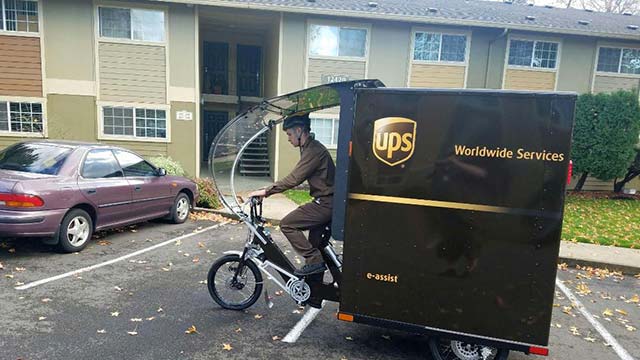
Photo credit: UPS
Some of the biggest polluters are garbage and trash hauling trucks. Because the stop and start hundreds of times a day, their diesel engines are constant spewing toxic pollutants into the atmosphere. While their total numbers are small, they discharge a disproportionate amount of emissions to the atmosphere. Taming the emissions from beasts would be an important step forward.
Ian Wright, a Tesla co-founder and former board member, thinks he has a solution. His company, Wrightspeed, builds heavy trucks powered solely by electricity but with a twist. Wright and his engineering staff have invented a small natural gas powered turbine that acts as a range extender engine. He claims his turbine operates so cleanly, it does not require a catalytic converter to meet California’s strict tailpipe emissions laws.
Salt Lake City start-up Nikola Motors recently revealed its idea for a 1000 HP low emissions electric truck called the Nikola One. Sleek and futuristic, it relies on battery power to turn its six electric motors but also has an onboard hydrogen fuel cell that is says will give the tractor a range of 800 to 1000 miles. The company says it has over a billion dollars worth of reservations in hand. While it did present a full size prototype at the reveal, many are taking a wait and see attitude toward Nikola Motors, which has no factory at the present time but claims it will begin production in 2018.
Summary
Trucks will play an important role in reducing global emissions from the transportation sector. A recent report from Navigant Research predicts annual sales of electric trucks — including hybrids and plug-in hybrids — will increase by a factor of ten over the next decade. From 31,000 worldwide today, Navigant says more than 332,000 electric trucks will be sold annually by 2026. That’s a big market for manufacturers to target.
Tesla has refused to consider any sort of range extender device for its cars, but solving the problems of building low emissions trucks for delivering freight and cargo across long distances may make such things a necessity. The need is great and the time is short. If hybrid trucks are what are needed, even as a stop gap measure while battery technology catches up with energy and cost constraints, that would be important for a world struggling to limit carbon emissions.
News
Tesla cleared in Canada EV rebate investigation
Tesla has been cleared in an investigation into the company’s staggering number of EV rebate claims in Canada in January.

Canadian officials have cleared Tesla following an investigation into a large number of claims submitted to the country’s electric vehicle (EV) rebates earlier this year.
Transport Canada has ruled that there was no evidence of fraud after Tesla submitted 8,653 EV rebate claims for the country’s Incentives for Zero-Emission Vehicles (iZEV) program, as detailed in a report on Friday from The Globe and Mail. Despite the huge number of claims, Canadian authorities have found that the figure represented vehicles that had been delivered prior to the submission deadline for the program.
According to Transport Minister Chrystia Freeland, the claims “were determined to legitimately represent cars sold before January 12,” which was the final day for OEMs to submit these claims before the government suspended the program.
Upon initial reporting of the Tesla claims submitted in January, it was estimated that they were valued at around $43 million. In March, Freeland and Transport Canada opened the investigation into Tesla, noting that they would be freezing the rebate payments until the claims were found to be valid.
READ MORE ON ELECTRIC VEHICLES: EVs getting cleaner more quickly than expected in Europe: study
Huw Williams, Canadian Automobile Dealers Association Public Affairs Director, accepted the results of the investigation, while also questioning how Tesla knew to submit the claims that weekend, just before the program ran out.
“I think there’s a larger question as to how Tesla knew to run those through on that weekend,” Williams said. “It doesn’t appear to me that we have an investigation into any communication between Transport Canada and Tesla, between officials who may have shared information inappropriately.”
Tesla sales have been down in Canada for the first half of this year, amidst turmoil between the country and the Trump administration’s tariffs. Although Elon Musk has since stepped back from his role with the administration, a number of companies and officials in Canada were calling for a boycott of Tesla’s vehicles earlier this year, due in part to his association with Trump.
News
Tesla Semis to get 18 new Megachargers at this PepsiCo plant
PepsiCo is set to add more Tesla Semi Megachargers, this time at a facility in North Carolina.

Tesla partner PepsiCo is set to build new Semi charging stations at one of its manufacturing sites, as revealed in new permitting plans shared this week.
On Friday, Tesla charging station scout MarcoRP shared plans on X for 18 Semi Megacharging stalls at PepsiCo’s facility in Charlotte, North Carolina, coming as the latest update plans for the company’s increasingly electrified fleet. The stalls are set to be built side by side, along with three Tesla Megapack grid-scale battery systems.
The plans also note the faster charging speeds for the chargers, which can charge the Class 8 Semi at speeds of up to 1MW. Tesla says that the speed can charge the Semi back to roughly 70 percent in around 30 minutes.
You can see the site plans for the PepsiCo North Carolina Megacharger below.

Credit: PepsiCo (via MarcoRPi1 on X)

Credit: PepsiCo (via MarcoRPi1 on X)
READ MORE ON THE TESLA SEMI: Tesla to build Semi Megacharger station in Southern California
PepsiCo’s Tesla Semi fleet, other Megachargers, and initial tests and deliveries
PepsiCo was the first external customer to take delivery of Tesla’s Semis back in 2023, starting with just an initial order of 15. Since then, the company has continued to expand the fleet, recently taking delivery of an additional 50 units in California. The PepsiCo fleet was up to around 86 units as of last year, according to statements from Semi Senior Manager Dan Priestley.
Additionally, the company has similar Megachargers at its facilities in Modesto, Sacramento, and Fresno, California, and Tesla also submitted plans for approval to build 12 new Megacharging stalls in Los Angeles County.
Over the past couple of years, Tesla has also been delivering the electric Class 8 units to a number of other companies for pilot programs, and Priestley shared some results from PepsiCo’s initial Semi tests last year. Notably, the executive spoke with a handful of PepsiCo workers who said they really liked the Semi and wouldn’t plan on going back to diesel trucks.
The company is also nearing completion of a higher-volume Semi plant at its Gigafactory in Nevada, which is expected to eventually have an annual production capacity of 50,000 Semi units.
Tesla executive teases plan to further electrify supply chain
News
Tesla sales soar in Norway with new Model Y leading the charge
Tesla recorded a 54% year-over-year jump in new vehicle registrations in June.

Tesla is seeing strong momentum in Norway, with sales of the new Model Y helping the company maintain dominance in one of the world’s most electric vehicle-friendly markets.
Model Y upgrades and consumer preferences
According to the Norwegian Road Federation (OFV), Tesla recorded a 54% year-over-year jump in new vehicle registrations in June. The Model Y led the charge, posting a 115% increase compared to the same period last year. Tesla Norway’s growth was even more notable in May, with sales surging a whopping 213%, as noted in a CNBC report.
Christina Bu, secretary general of the Norwegian EV Association (NEVA), stated that Tesla’s strong market performance was partly due to the updated Model Y, which is really just a good car, period.
“I think it just has to do with the fact that they deliver a car which has quite a lot of value for money and is what Norwegians need. What Norwegians need, a large luggage space, all wheel drive, and a tow hitch, high ground clearance as well. In addition, quite good digital solutions which people have gotten used to, and also a charging network,” she said.
Tesla in Europe
Tesla’s success in Norway is supported by long-standing government incentives for EV adoption, including exemptions from VAT, road toll discounts, and access to bus lanes. Public and home charging infrastructure is also widely available, making the EV ownership experience in the country very convenient.
Tesla’s performance in Europe is still a mixed bag, with markets like Germany and France still seeing declines in recent months. In areas such as Norway, Spain, and Portugal, however, Tesla’s new car registrations are rising. Spain’s sales rose 61% and Portugal’s sales rose 7% last month. This suggests that regional demand may be stabilizing or rebounding in pockets of Europe.
-

 Elon Musk2 weeks ago
Elon Musk2 weeks agoTesla investors will be shocked by Jim Cramer’s latest assessment
-

 Elon Musk2 days ago
Elon Musk2 days agoxAI launches Grok 4 with new $300/month SuperGrok Heavy subscription
-

 Elon Musk4 days ago
Elon Musk4 days agoElon Musk confirms Grok 4 launch on July 9 with livestream event
-

 News1 week ago
News1 week agoTesla Model 3 ranks as the safest new car in Europe for 2025, per Euro NCAP tests
-

 Elon Musk2 weeks ago
Elon Musk2 weeks agoA Tesla just delivered itself to a customer autonomously, Elon Musk confirms
-

 Elon Musk1 week ago
Elon Musk1 week agoxAI’s Memphis data center receives air permit despite community criticism
-

 News2 weeks ago
News2 weeks agoXiaomi CEO congratulates Tesla on first FSD delivery: “We have to continue learning!”
-

 Investor's Corner2 weeks ago
Investor's Corner2 weeks agoTesla gets $475 price target from Benchmark amid initial Robotaxi rollout

